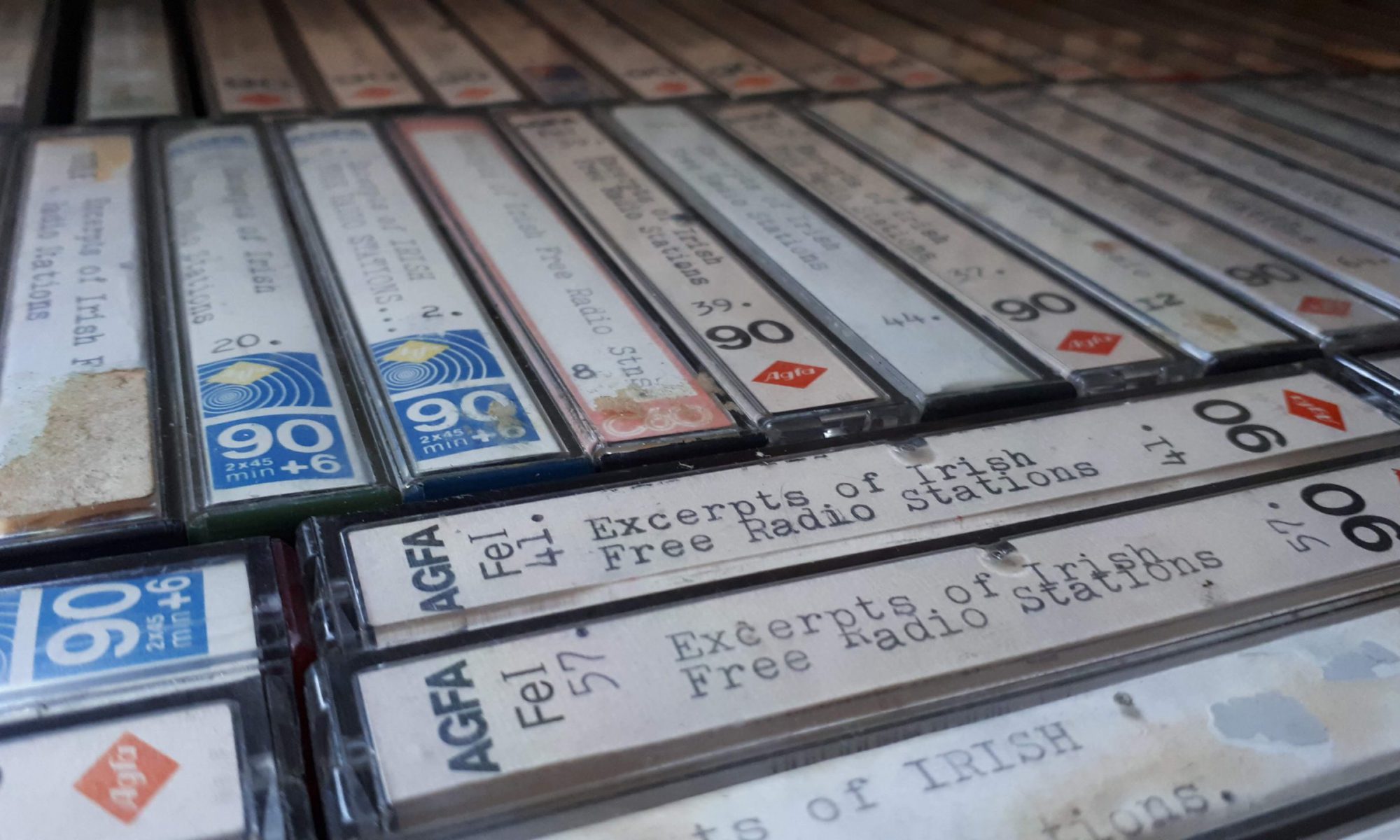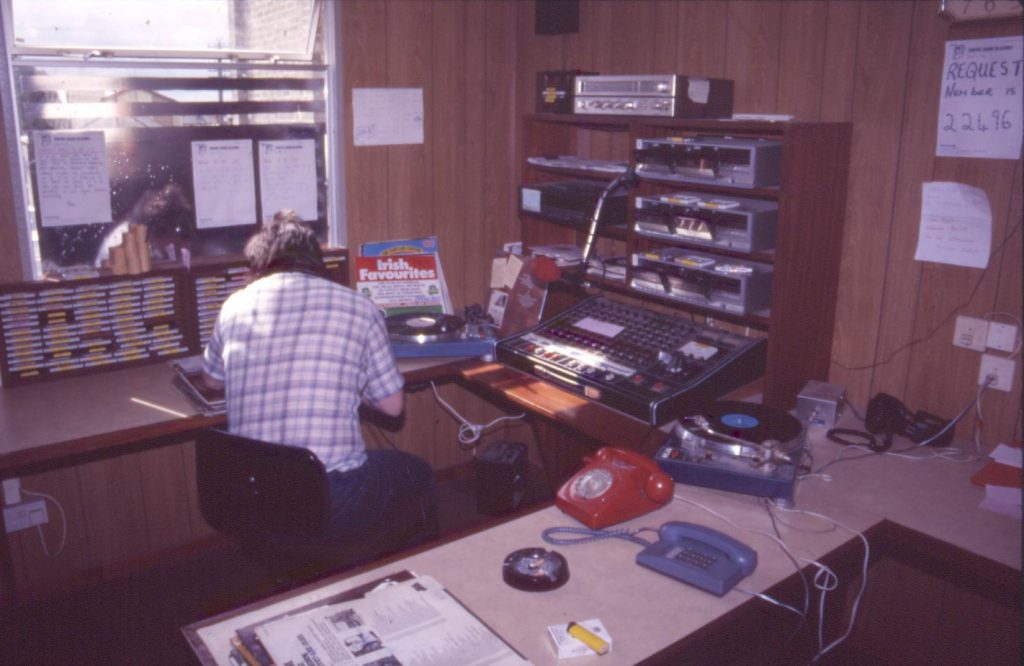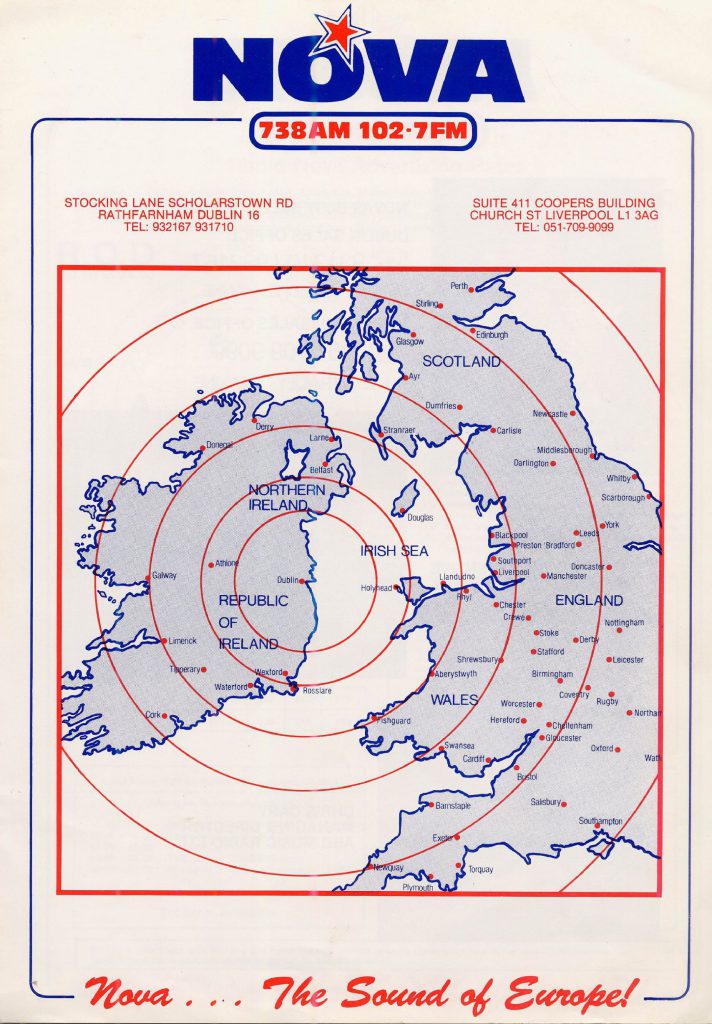Podcast: Play in new window | Download

One of the characteristics of the super-pirate Radio Nova was its high-powered broadcasts on medium wave aimed at listeners in Britain. By 1985, the station was broadcasting 50kW of power on 738 kHz AM and reaching cities such as Liverpool and Manchester but the frequency was prone to interference at night. Longwave – capable of covering larger distances and using a less crowded band – seemed like an option to reach Britain more effectively and was tested by Radio Nova in late 1985 and early 1986.
Nova began broadcasting on 254 kHz on 6th December 1985, relaying the main service on 738 kHz. The audacious move was noted by the Media Network programme on Radio Netherlands International but the initial broadcasts were intermittent and on low power. Signal strength improved in the first fortnight in January 1986 but no mention of longwave was made on air and it is likely that few listeners were aware of the broadcasts. Separate longwave broadcasts did not begin until 28th January, when Nova was relayed until 1400, followed by a programme presented by Chris Barry until 1800. The same schedule continued for the following two days until the transmitter was switched off on Thursday 30th January at around 2215. It is estimated that power output was in the region of 15 kW at the time. The reason for the switch-off of longwave is not known but Nova was by this time in deep trouble and would close down completely on March 19th.
254 kHz (later 252) was the longwave frequency allocated to Ireland by the International Telecommunication Union and would later be used by the joint RTÉ and Radio Luxembourg venture, Atlantic 252 (1989-2002). Atlantic 252 broadcast from Co. Meath but was aimed at the UK market and covered most of the British landmass with its 500 kW of power. From 2004 to 2023, RTÉ used the frequency to broadcast Radio 1 into Britain, but power was reduced significantly in later years and there were problems with co-channel interference from an Algerian station.
This recording of Radio Nova on longwave was made in the English midlands on 22nd January 1986 from 254 kHz between 1254-1326 and is a relay of the main service. It features the usual high-level adverts from agencies and for large businesses and the ABC Network News is presented by Bob Gallico and Sybil Fennell. After the news, Electric Lunchtime is hosted by Tony McKenzie. The recording is from the Leon Tipler Tapes Collection, donated to us by Steve England, and background information is courtesy of DX Archive.




